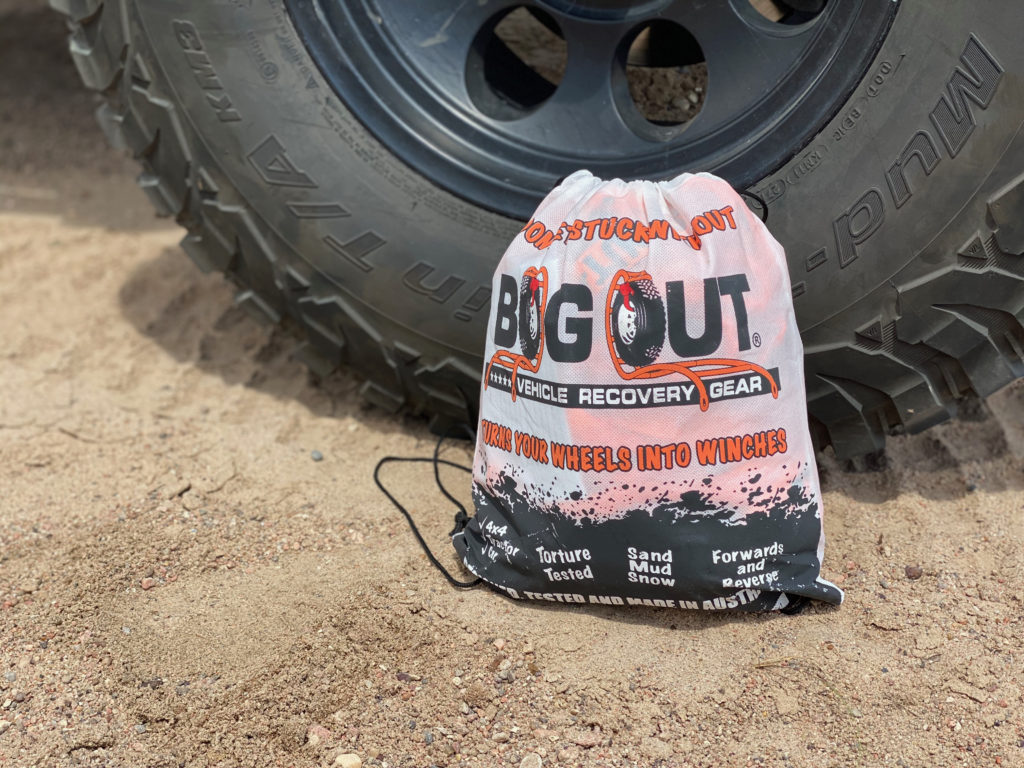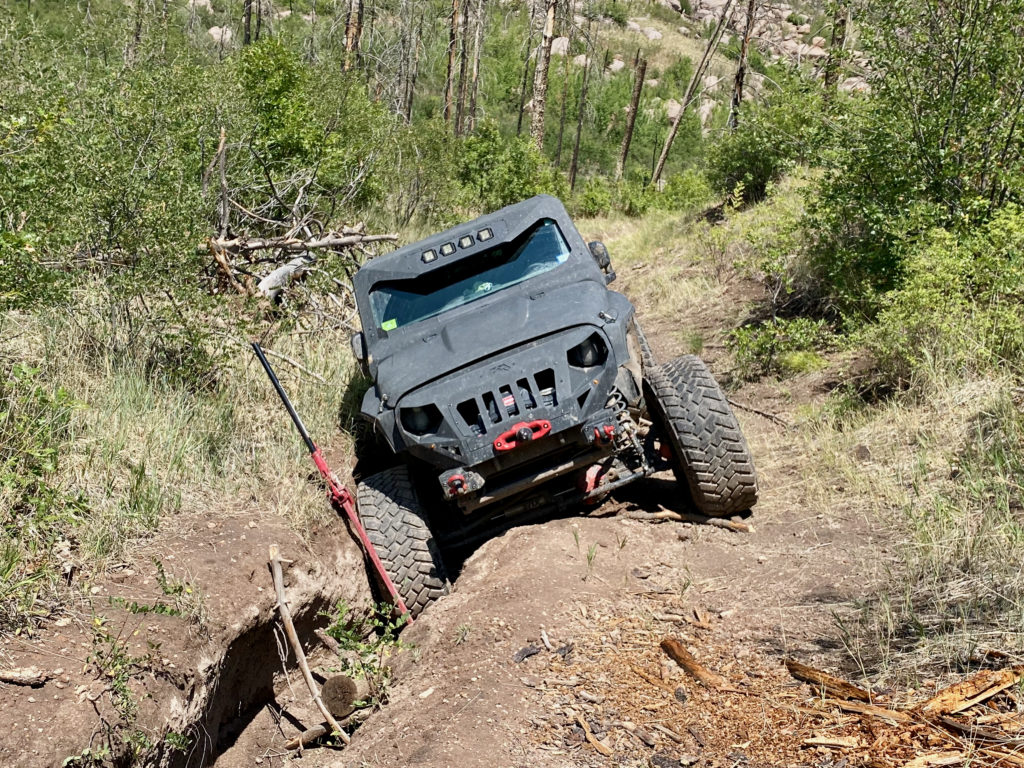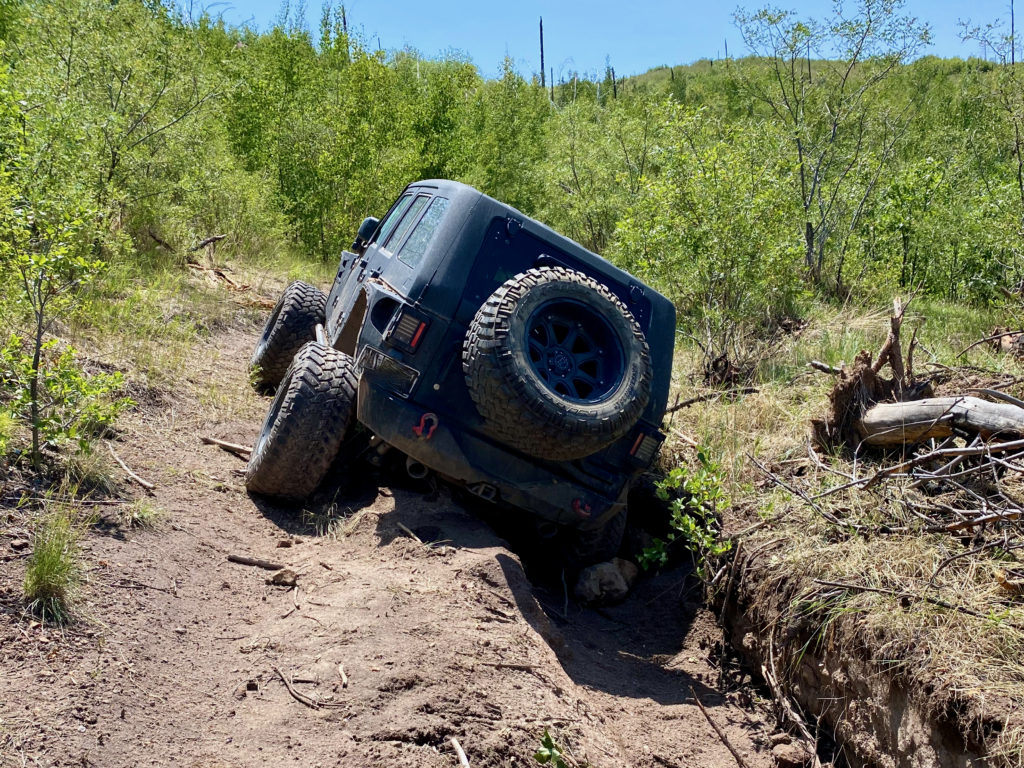We’re interested in how average people can ‘recover’ their own vehicle out of a ditch or mud pit without needing an expensive integrated winch.
The BOG OUT is a vehicle recovery tool that works by turning your vehicle’s tire into a winch drum and using your engine to engage it. It looks simple and easy to use — hook it on your tire and it will get you out of any mess you get your vehicle into.
It’s a neat theory: use the motor and rotating drum (the wheels) you already have in your car instead of adding a separate winch. Just add a strap/rope to the wheel and voila, you’ve got a DIY winch.
So we got one in, fueled up our trucks, and went out to test it in the deserts of the Southwest.
Reviewers were Scott Parker, an instructor with International 4-Wheel Drive Trainers Association (I4WDTA) who’s been offroading for 20 years, and Tom Rader, Managing Editor of The Prepared and a lifelong offroader / overlander.
Here’s what we learned:
- BOG OUT does work as advertised, both as a pseudo winch replacement and tow rope.
- But it fell short of being that great “winch alternative for average people and cars” because it has its own quirks and you likely need more than one of the products to deal with common emergencies (eg. stuck in a snowbank).
- You need additional recovery gear and to be proficient with anchors to use BOG OUT safely.
- BOG OUT requires more observation than a traditional winch since it has the ability to damage the driveline.
- It is relatively inexpensive compared to a traditional winch setup (roughly $120 vs. >$500), and you don’t need special mounts (like a heavy-duty bumper).
Product specs and features
The BOG OUT is a 4.5-meter long, hand-sewn rope ladder made of plaited braid lines (each rated at 2160kg) and crossed with tear-resistant webbing (rated at 2140kg).
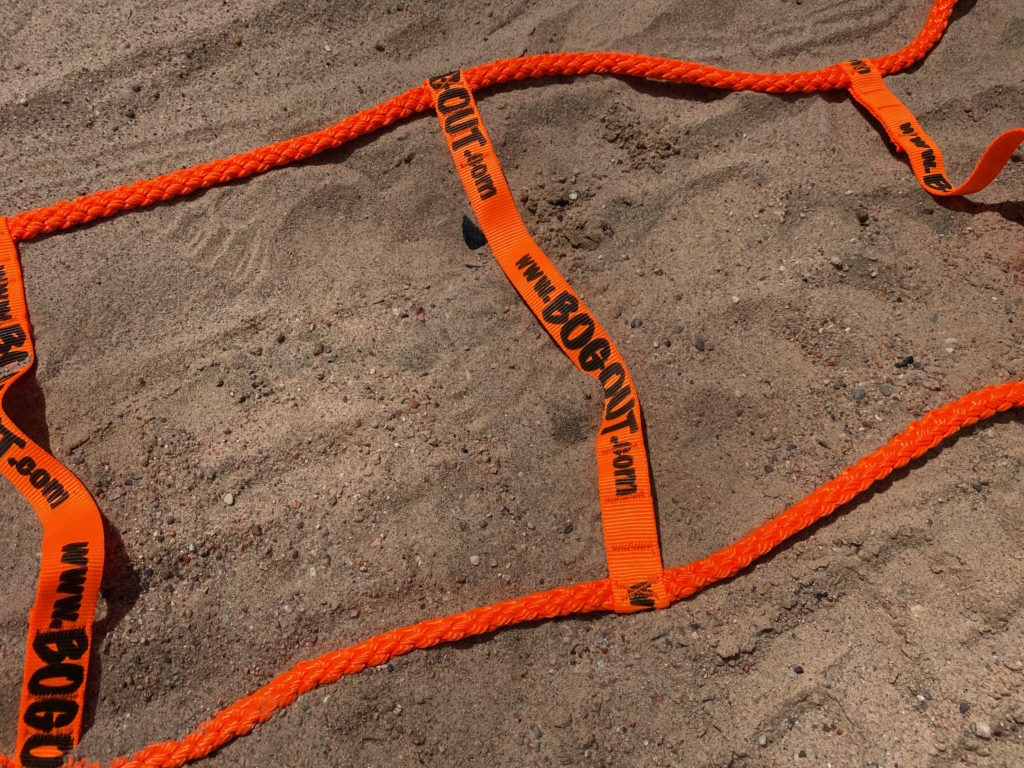
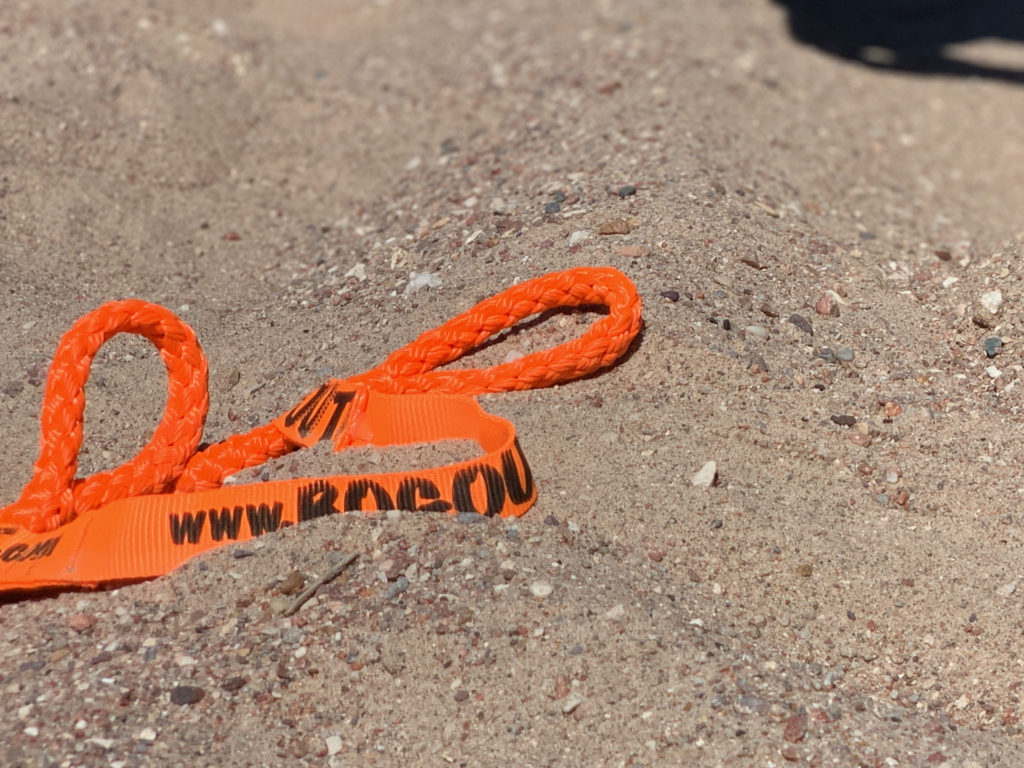
In addition to turning a vehicle tire into a winch, the BOG OUT also provides 100% traction to the wheel it is attached to—but that’s dependent on the ability of the wheel to spin.
Knowing the drive type of your vehicle (front-wheel-drive, 4WD, AWD, etc) is critical. Power will go to the wheel that’s not stuck, so if the wheel you need to use won’t move, you’ll need to free it up.
The BOG OUT comes with the rope ladder assembly, two connector ties (which are used to anchor the looped ends to the tire), a stuff sack, and a user guide for around $120 USD (their prices are in AUD).
BOG OUT also comes as a “bundle” which includes additional connector straps and a 15-meter braided rope, a “pro pack” which is the same as the bundle but adds two soft shackles, and as a “twin” which doubles the equipment. The twin “Pro” pack (that includes two of everything) costs just under $300 USD.
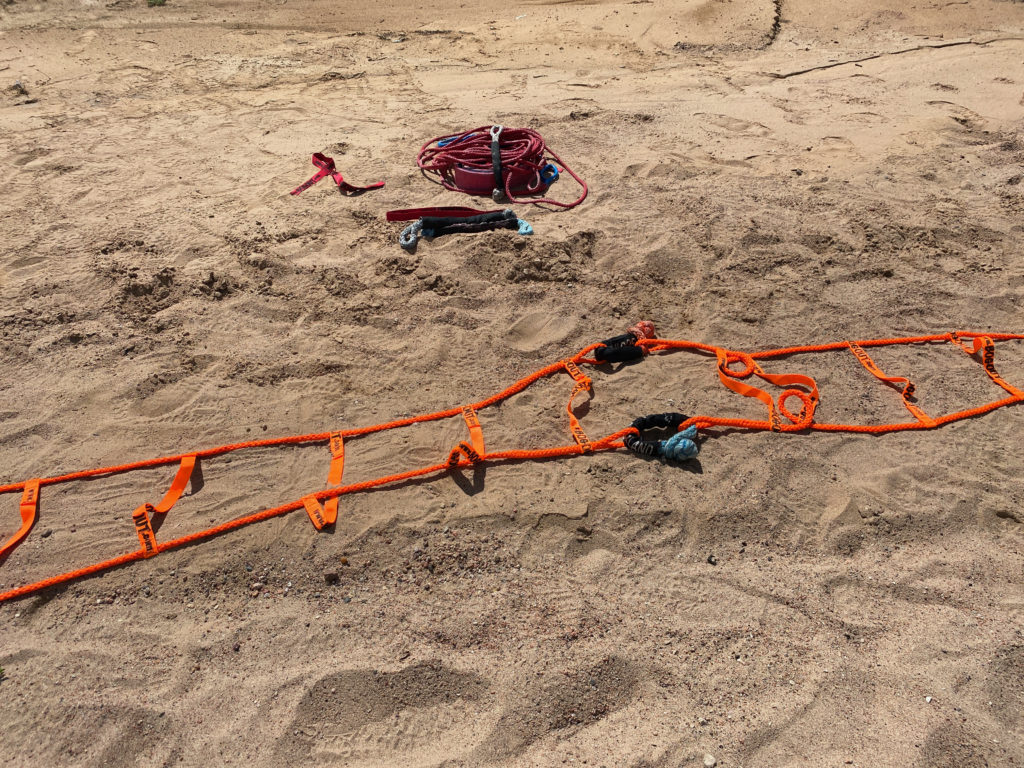
Recovery basics
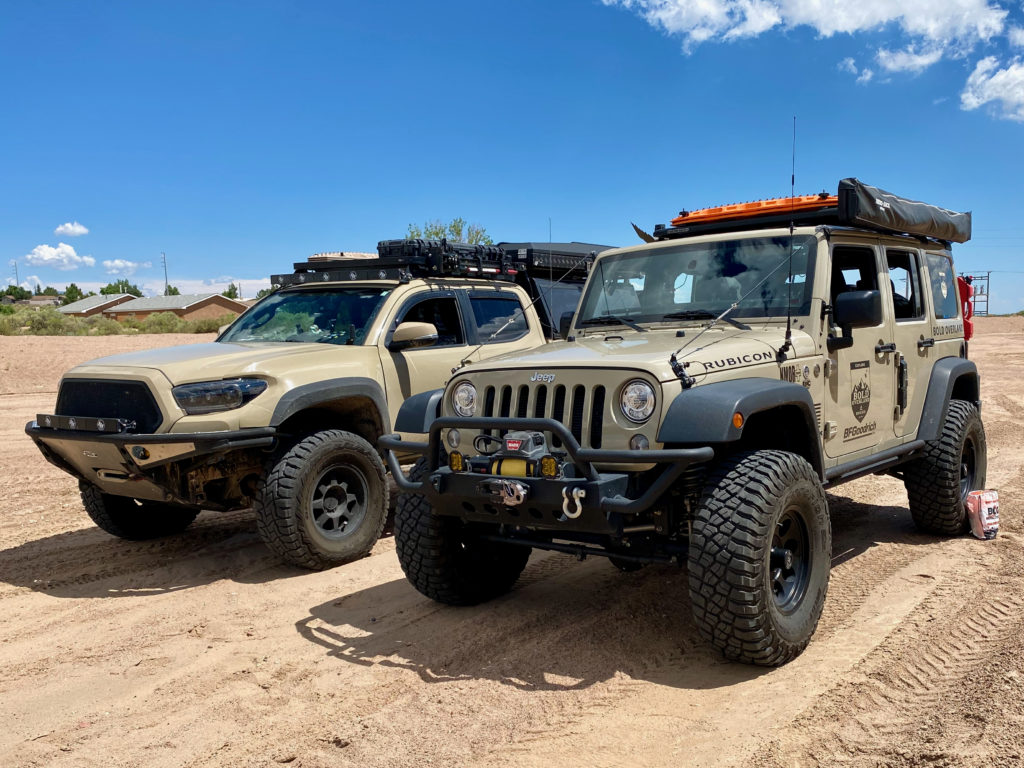
Vehicle recovery isn’t always a simple process. There are many factors that must be factored into performing a safe and effective recovery. This includes:
- type/size (weight) of vehicle
- drive of the vehicle (front? rear? all?)
- terrain in which the vehicle is stuck
- location of suitable anchors (including direction, distance, and type)
- which wheels are stuck, can they be dug out
Testing and use
Over the course of a couple of trips, we tested the BOG OUT using the authors’ vehicles. Both of the vehicles we used are highly capable off-road rigs, and we were unable to get them truly stuck. We did, however, engineer a few problems to test the efficacy of the BOG OUT — the concept should work regardless if you are stuck or not.
We initially looked at the BOG OUT as a potential tool for use by an untrained person that got their vehicle stuck in snow or mud, close to a road. When performing actual tests, we didn’t evaluate this as a tool for off-road use by experienced drivers and recovery personnel, or on known four-wheel-drive trails with known obstacles — there are plenty of examples of BOG OUT being used in these situations. We do illustrate a couple of examples of advanced recoveries that the BOG OUT would likely not have been appropriate on.
Honestly, the testing was pretty mundane. It works exactly as advertised. Assuming you use an appropriate anchor, the BOG OUT will pull the vehicle along the track. It also works just fine as a tow line. There are no issues with those features.
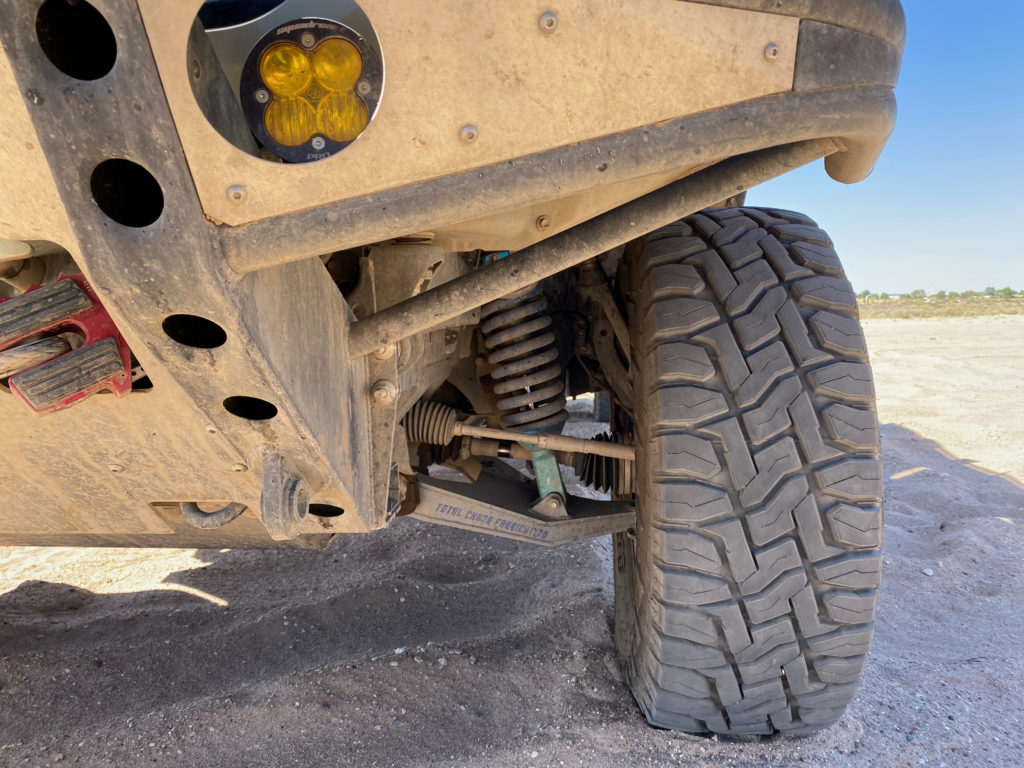
We spent more time looking for potential pitfalls for the untrained (or less experienced) user. The biggest issue is making sure that it winds evenly around the tire, and doesn’t slip. If the BOG OUT moves toward the inside of the wheel, it can cause terrible damage to your vehicle’s driveline components.
As with any recovery operation, you must have eyes on your system. It should be noted that when using a winch you can turn your wheels to maneuver as needed—with a BOG OUT system you will need to keep the wheels straight, which is not always possible when recovering a vehicle.
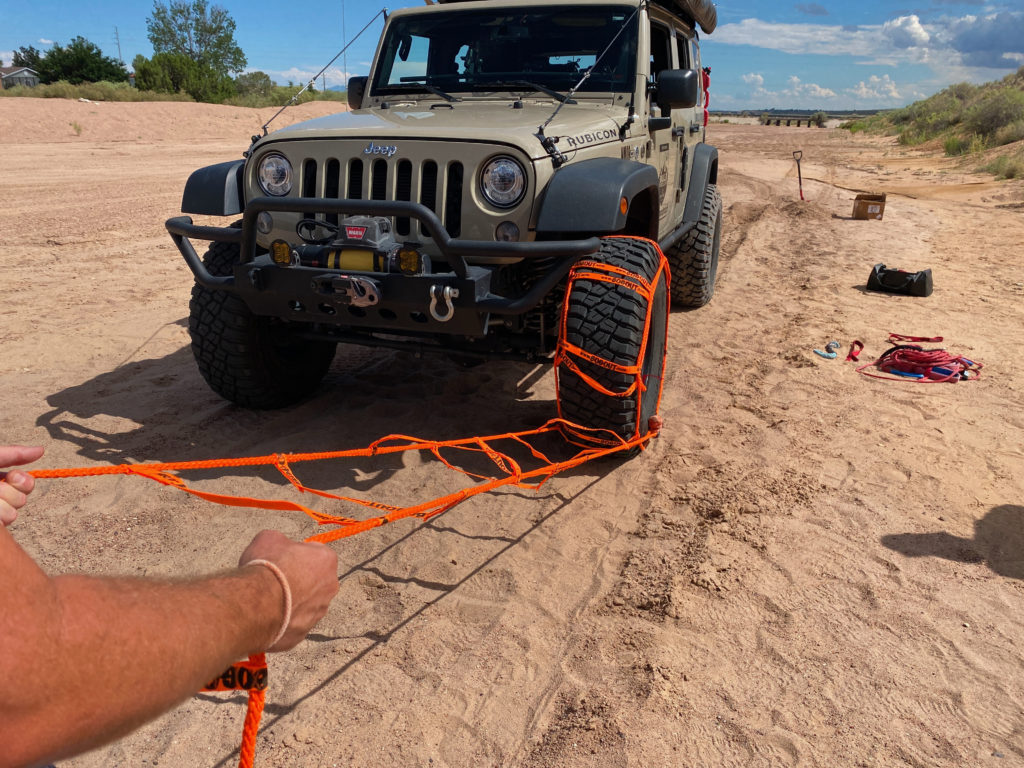
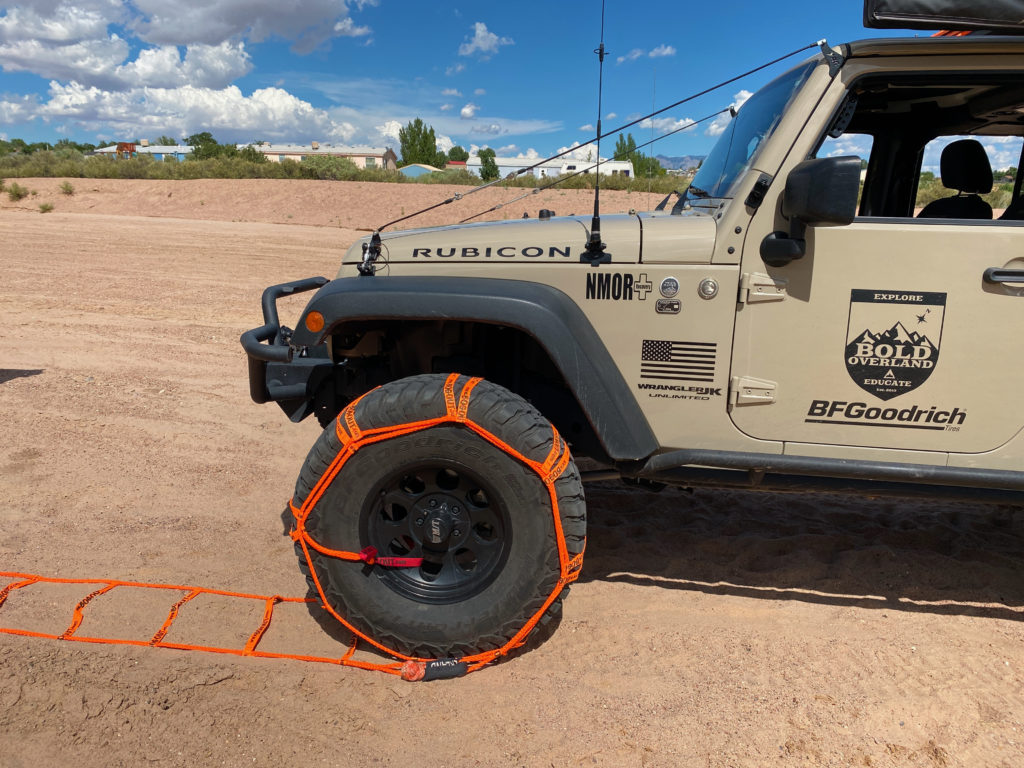
The next issue is related to “where” you got stuck. BOG OUT claims on their website that most “bogs” (getting stuck) only require a short length to get free of the obstacle. Yes and no. That assumes that the vehicle has the ability to continue from that point, or can return along the same line and that you have the ability to anchor within the limits of your recovery equipment and skill level.
You also have to take into account the material in which the vehicle is stuck. Beach sand is different than sticky mud which is different than ice, etc.
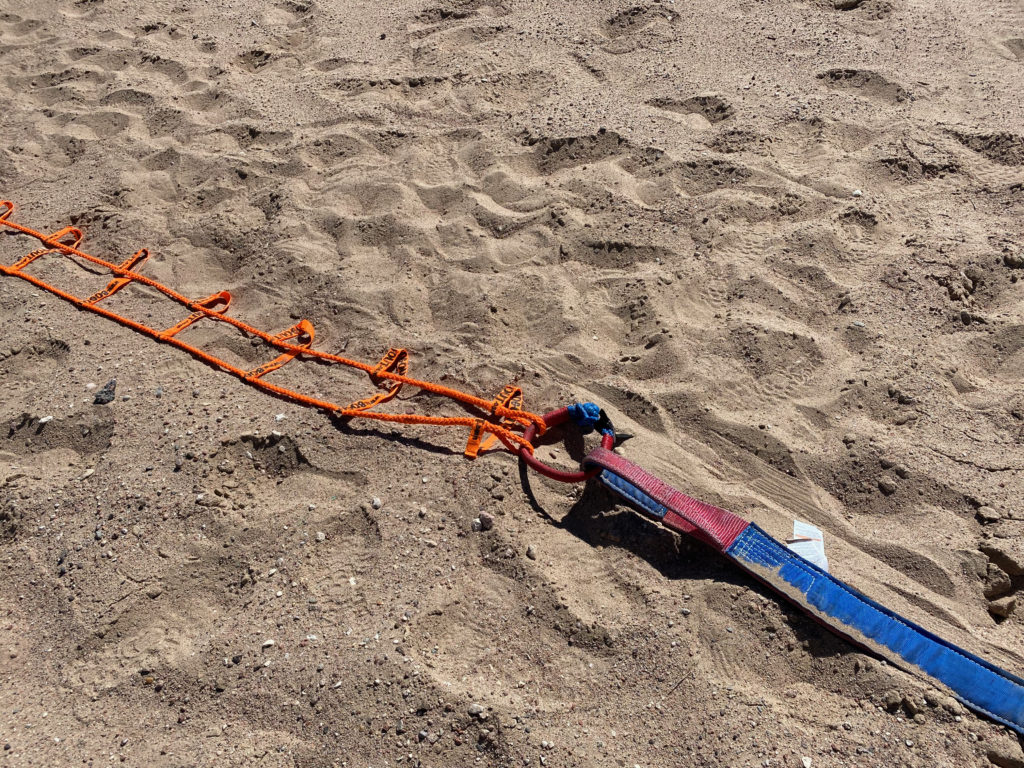
Take for example a front-wheel-drive car that has slipped on an icy road and has slid to the shoulder, and whose rear is now stuck in the snow, and cannot get traction to move forward. To use the BOG OUT as intended you would need to find an anchor, which would likely be in the middle of the icy road. You would probably need another vehicle that could serve as an anchor point (while not slipping).
Could you use the BOG OUT as a “tire chain”? Possibly, though the synthetic line doesn’t bite into ice as metal does.
Another example is the road between Durango, CO, and Silverton, CO. It frequently experiences a washout where deep mud and detritus cover the road, sometimes a couple of feet deep. If you were stuck by that or pushed to the side of the road, you again would need an anchor somewhere in the road.
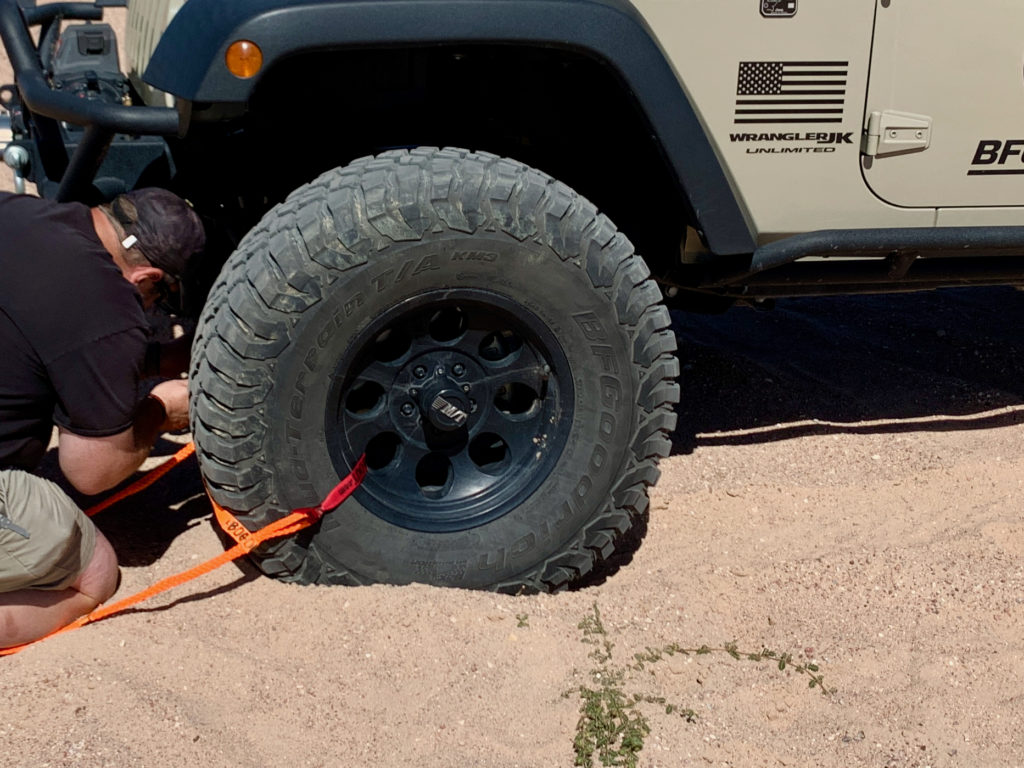
We asked Carlotta, a member of The Prepared team who’s a total newbie in offroad recovery, to try using the BOG OUT. She noted it was easy and quick to attach to the vehicles — she attempted on an off-road rated (not mall-rated) Jeep, and a Subaru. She also mentioned the knot for attaching the BOG OUT to the wheel (a simple sheet bend) was easy to do and remember. Her overall issue was “but what do I do next?”:
In a vacuum (no real-life experience), tying each method might have taken about 5 min (I didn’t time it). Of course, this doesn’t count the time you have to tie it around the anchor. Which made me think: How do you tie the other end to the anchor? I’ve just read the instructions and it does say that “BO has its own specialized anchoring system under development.” but it doesn’t offer any other specific instructions.
Recent example recoveries where BOG OUT would not have been effective
We are highlighting a couple of examples where the BOG OUT was not the right tool. You can see plenty of solid examples of cases where it was useful on BOG OUT’s social media. These two examples are NOT situations in which an average driver is likely to find themselves. We present them to show why it is important to have an understanding of recovery as a whole and not rely on a single tool.
Recovery #1
The following vehicle slipped into a washout while returning to the trailhead. While trying to get unstuck, the driver locked his differentials (which was not the correct remedy for this situation). As a result, the front axle snapped, leaving the vehicle as rear-wheel-drive only.
Additionally, the vehicle suffered another mechanical failure preventing us from disengaging the lock on the rear differential during the initial extraction.
Recovery was done by using shovels, traction boards, and the onboard winch. We had to fill in the washout using logs and dirt. This allowed us to form a ramp by positioning traction boards on top of the backfill. The ground was sufficiently hard that we needed Krazy Beaver shovels to dig into the ground and free up dirt.
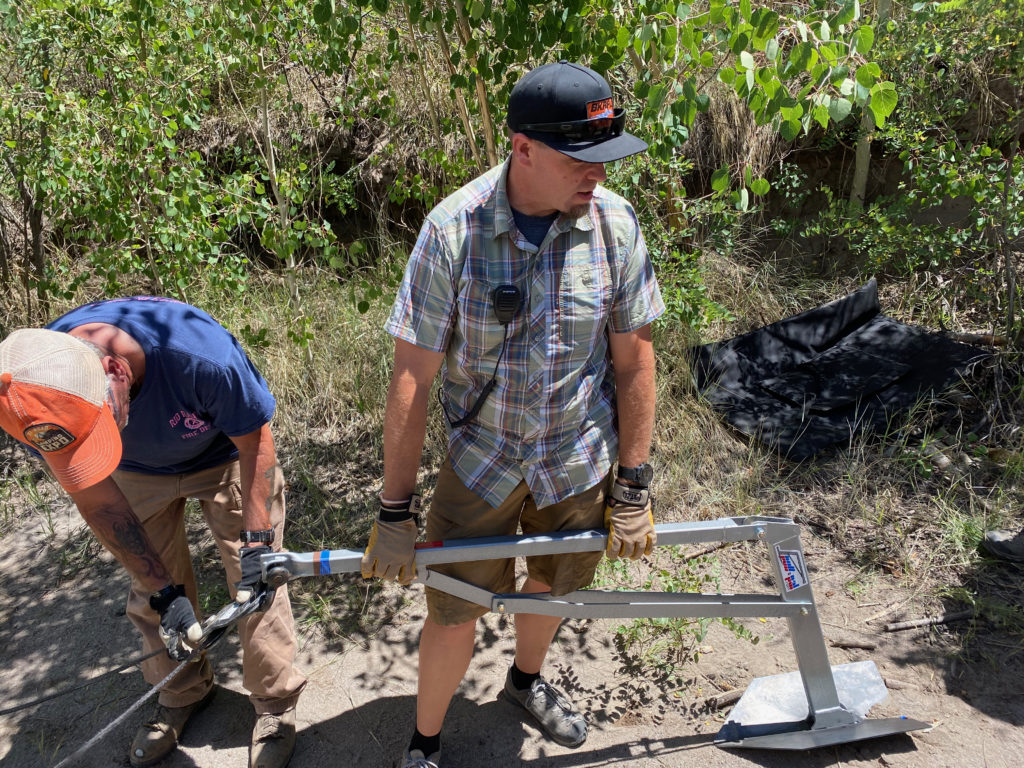
A BOG OUT would not have made the job easier here. Since the vehicle only had rear-wheel drive, we would have been limited to backing the vehicle up with a locked differential, and the chassis high-centered. We still would have had to navigate the washout to get the vehicle back to the trailhead. The only effective way to recover this vehicle was forward.
Potentially we could have linked a couple of BOG OUTs, but we would still have needed a suitable ground anchor. The trail was too hard to effectively improvise an anchor (with a buried tire or log), and there were no trees (or boulders) that could be used on the approach line.
Recovery #2
The second recovery was on an overweight Tacoma that got mired in quicksand after following a Unimog through a riverbed. The much heavier Unimog broke through the “crust” on this particular stretch, and the depth was not apparent to the Tacoma (the previous 2 miles of trail had been similar, but not nearly as deep).
Video of the recovery:
The Tacoma made it about 35-meters before the depth and viscosity arrested movement. The chassis of the truck was resting on the surface of the ground, and all four wheels were free spinning. Any attempts to dig the wheels out failed as the near liquid sand and silt-filled in the hole as fast as it was being dug out.
Firmer land was at roughly 20-degrees from the front of the vehicle meaning we could not do a straight line pull. We hooked a 50-meter kinetic line to a hard mount shackle on the Tacoma and to the rear of the Unimog, to do a dynamic pull. The closest the Unimog could get was about 30-meters.
BOG OUT’s FAQ mentions that most of the time, the winching strength far exceeds the needed force to free a vehicle. This is true on a vehicle that has the ability to roll normally. In this case, the Tacoma did not have that ability — the muck was over three-quarters the height of the tires, and the body was affected by the suction of the quicksand. The closest safe anchor point was the Unimog at 30-meters. That would have required six BOG OUTs or a mix of BOG OUTs and other straps. Also, BOG OUTs documentation says that when neither tire has traction, two BOG OUTs would be needed.
Since we need a “kinetic kick” to break the suction to the frame, there would have been a potential compromise to the integrity of the BOG OUT since it is a static line. This recovery was ultimately performed using two hard shackles and a kinetic line.
Conclusion
The BOG OUT is ultimately not a tool for beginners and it requires additional equipment (beyond the actual rope ladder) for successful use — all the same stuff you would need with a traditional winch.
Your best bet would be to get the Pro Pack (Twin) since it includes additional lines and some soft shackles.
While it might have utility in the kit of an experienced recovery team, it is not an appropriate tool to throw in the back of your vehicle as an emergency recovery device without a few other components and sufficient training.
The BOG OUT could serve as a stop-gap if you do not have a winch since it’s core function is turning your wheel into a winch drum. But you still need to have training and experience to use it.
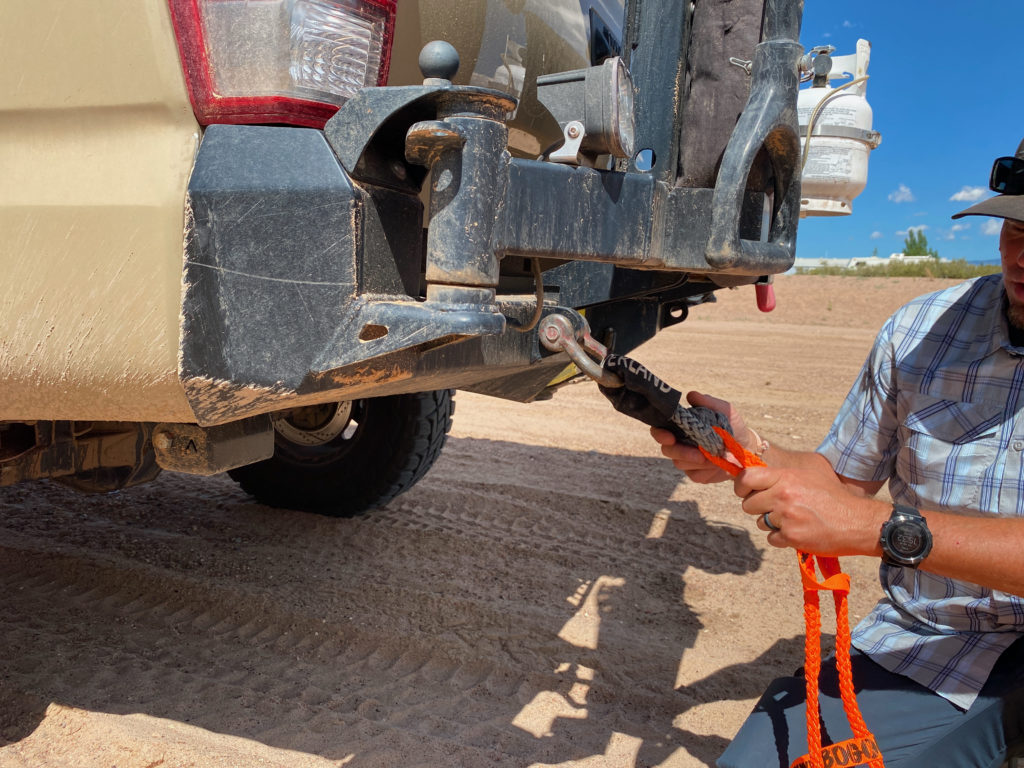
We can confirm the BOG OUT is fast to deploy and attach to the stuck vehicle. But that does not alleviate the time it takes to construct a safe and effective anchor. Regardless of using a BOG OUT or a winch, you still need to understand and have practical experience at setting an anchor sufficient to manage the forces needed during a recovery. Looping the end of a BOG OUT over the ball hitch of another vehicle (or anchoring with a chain) would not be a smart idea:
If you are an experienced off-road driver, you likely already have all of the equipment you need, and this would be unnecessary. We suppose it could serve as a backup to a traditional winch so long as you understand the limitations and have trained with it.
Pros:
- Very lightweight compared to a traditional winch
- Synthetic materials (opposed to braided cable found on some winches)
- Relatively inexpensive for the functionality. ~$300 as opposed to ~$1000 for a winch
- You don’t need a potentially expensive bumper mount for it (as you would a winch)
- Can also be used as a static line for towing
Cons:
- You have to pay very close attention to the line of pull–if the material does not wind over the tire evenly, you can cause catastrophic damage to your vehicle.
- A single BOG OUT is only 4.5-meters long (9-meters with a double kit)–opposed to 30-meters on a winch. While both a BOG OUT and winch have their max effectiveness at the furthest extension, rarely do you find a suitable anchor point within a body length of the vehicle on a straight line of travel. If you were to slide off of an icy road into a ditch–it would not be effective at helping you recover to the road.
- Winches are normally operated outside of the vehicle where the operator can observe the line, the pull, the anchor, etc. BOG OUT requires you to drive the vehicle over the device (which must be precisely wound to prevent damage). This means frequent observation–ideally, you have a second person.
If you decide to add the BOG OUT to your kit, you should ensure you have additional tow rope (or recovery strap), shackles (a mix of hard and soft is a good idea), gloves, and a shovel. These are the items you should have at a minimum.
To learn more about the BOG OUT, or order if you feel this is the right tool for your kit, you can visit their website at: https://www.bogout.com/


